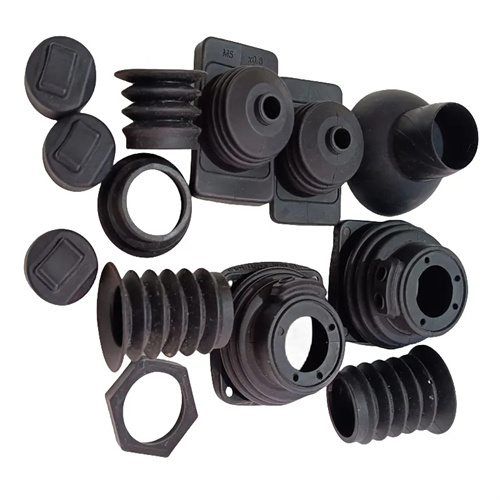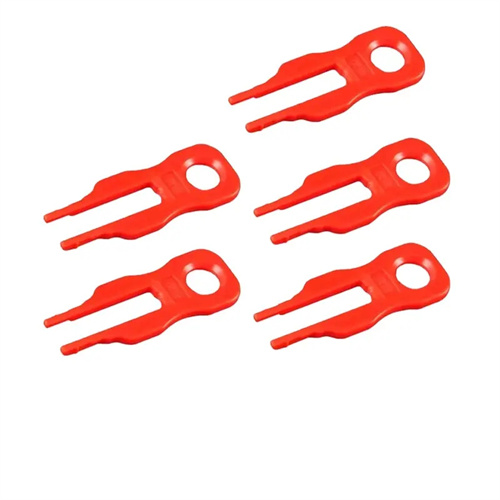Advantages of multi-stage injection molding
Multi-stage injection molding is an injection molding technology that divides the injection process into multiple stages based on the structural characteristics of the plastic part and molding requirements, and independently controls parameters such as injection speed and pressure in each stage. Compared to traditional single-stage injection molding, this technology can more precisely control the flow, filling, and pressure-holding processes of the molten plastic in the mold cavity, significantly improving the quality and performance of the plastic part, and has clear advantages in the production of precision plastic parts and parts with complex structures. For example, for plastic parts with thin and thick walls, multi-stage injection molding can ensure that the thin-walled areas are filled quickly by adjusting the injection speed at different stages to avoid short shots, while reducing the speed in the thick-walled areas to reduce the occurrence of bubbles and sink marks.

The primary advantage of multi-stage injection molding is its ability to effectively improve the surface quality and internal properties of plastic parts. During the injection molding process, the flow state of the molten plastic directly affects the surface finish and internal density of the plastic part. Through multi-stage injection control, a lower injection speed is used during the initial filling phase to avoid turbulence and air entrapment caused by the high-speed melt impacting the mold cavity, thereby reducing surface defects such as silver streaks and bubbles. When the melt has filled 80%-90% of the cavity, the injection speed is reduced and the holding pressure is increased. This allows the melt to more closely adhere to the cavity surface, improving the surface finish and dimensional accuracy of the plastic part. Furthermore, by adjusting the melt temperature and pressure at different stages, multi-stage injection can control the plastic’s crystallinity and molecular orientation, thereby improving the mechanical properties of the plastic part, such as increasing impact strength and reducing warpage caused by internal stress. For example, in the production of polycarbonate plastic parts, using multi-stage injection molding can increase the impact strength of the plastic part by 10%-15% and reduce warpage by over 20%.

Multi-stage injection molding can significantly improve material utilization and reduce production costs. Traditional single-stage injection molding often requires high injection and holding pressures to ensure part filling quality. This can lead to overfilling of the mold cavity with melt, resulting in flash, increased part weight, and material waste. Multi-stage injection molding, on the other hand, precisely adjusts parameters at each stage based on cavity filling conditions, reducing the amount of melt injected while ensuring complete filling. For example, injection speed and pressure can be reduced in the later stages of filling to prevent overfilling due to melt inertia. Proper holding pressure parameter settings can reduce shrinkage during the holding stage, thereby reducing the actual weight of the part. According to statistics, multi-stage injection molding can increase material utilization by 5%-10%, significantly reducing raw material costs for mass-produced parts.

Multi-stage injection molding offers greater adaptability and stability for molding complex structural parts. Complex structural parts often incorporate a variety of structures, including thin and thick walls, ribs, and cavities. Single-stage injection molding can easily lead to uneven filling and noticeable weld marks due to the significant differences in melt flow resistance across different structural regions. Multi-stage injection molding allows for customized injection parameters to be tailored to each structural region: When the melt flows through thin-walled areas, the injection speed and pressure are increased to overcome flow resistance and ensure smooth filling. When flowing through thick-walled areas, the injection speed is reduced, extending the filling time to allow for adequate melt degassing and reduce bubbles and sink marks. When the melt encounters ribs or cavities, the pressure is appropriately reduced to prevent deformation of the part caused by excessive localized pressure. This targeted parameter control effectively addresses the molding challenges of complex structural parts, improving production stability and yield. For example, in the production of complex parts such as automotive instrument panels, the use of multi-stage injection molding can increase the yield from 70% to over 90%.

Multi-stage injection molding can also extend the life of the mold and reduce equipment energy consumption. In single-stage injection molding, high injection pressures and speeds exert significant impact and wear on the mold cavity and gating system. Long-term use can easily lead to scratches on the mold cavity surface and wear on the sprue bushing, shortening the mold’s life. Multi-stage injection molding, however, rationally distributes pressure and speed across each stage, reducing the impact load of the melt on the mold and minimizing mold wear. Furthermore, multi-stage injection molding dynamically adjusts injection pressure and speed based on the needs of the filling stage, avoiding the energy waste caused by continuous high pressure and high speed operation in single-stage injection, thereby reducing equipment energy consumption. It has been estimated that compared to single-stage injection molding, multi-stage injection molding can extend mold life by 15%-20% and reduce equipment energy consumption by 10%-15%. With the continuous advancement of injection molding technology, the control precision and intelligence level of multi-stage injection molding will further improve, and its application prospects in precision manufacturing, green production, and other fields will be even broader.
